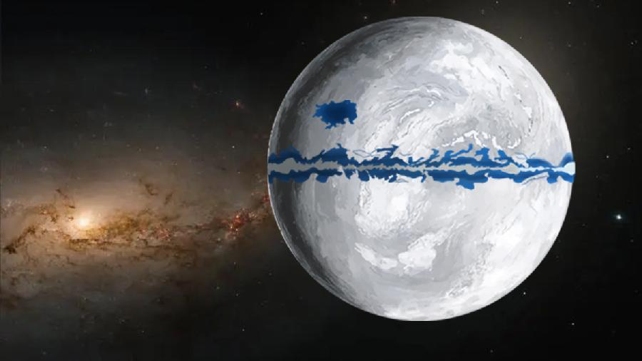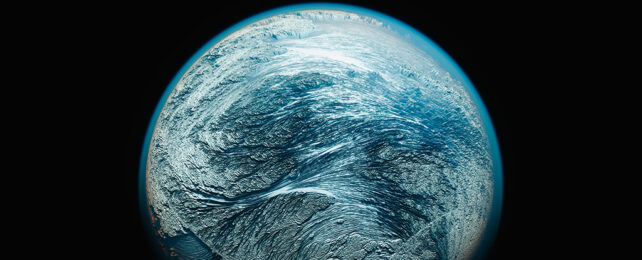Long before complex life crawled from the oceans to make itself at home on dry land, Earth endured an ice age like no other. On two separate occasions, fingers of ice stretched far from the poles, turning the planet into a frozen wasteland.
Just how far glaciers reached has been a matter of debate. Some contend the runaway deep freeze extended across all latitudes, completely coating Earth in a thick coat of ice as far as the equator.
Others argue equatorial latitudes may have been relatively ice-free. Evidence buried in the fossil record also suggests there might have been patches of exposed ocean, enough for oxygen and light to permeate the waters and allow complex life to flourish.

In that vein, a new study by researchers from China and the UK is the latest to suggest 'Snowball Earth' wasn't completely covered in ice – and might have even exhibited habitable open-ocean conditions far away from the equator.
Just what caused Earth to suddenly dip into an extended cold snap around 700 million years ago isn't all that clear. A drop in sunlight perhaps, or a loss of greenhouse gases, followed by a feedback of ice reflecting heat, creating yet more ice.
For tens of millions of years our planet was covered – more or less – in a shell of frozen water. A brief reprieve from the extreme cold as volcanoes belched out carbon dioxide was soon followed by a second chill around 650 million years ago, now dubbed the Marinoan glaciation.
The extensive gouging and grinding of crust by massive tongues of ice would be a boon for life diversifying in the oceans, providing marine ecosystems with a generous dusting of nutrients as the glaciers eventually retreated.
While this may have helped kick-start a biodiversity explosion, times would have been tough for complex life trying to survive in cold waters cut off from the atmosphere in the midst of the extreme ice age. Starved of oxygen, life should, in theory, have been dominated by simple anaerobes and deep-dwelling chemotrophs.
Only that isn't what the fossil record shows. Black shales buried in the Nantuo Formation of South China preserve traces of sediments shed by the Marinoan glaciers. Within them are macroscopic traces of surprisingly complex organisms, interpreted as a kind of algae.
Being photosynthetic means a reliance on sunlight, meaning Snowball Earth might have been speckled with patches of ice-free ocean where life could stare up at the sky and soak up the rays.
As far as evidence of exposed ocean during the Marinoan glaciation goes, questionable fossils of macroscopic algae leave plenty of room for debate.
By analyzing the chemistry of the Nantuo Formation shale, the team behind this latest investigation hoped to uncover additional evidence that would help determine whether areas of the surface remained ice-free during this important period in Earth's history.
Examining the nature of the material's iron content, for example, provided data on redox reactions that described levels of oxygen at the interface between sediment and the water above. By studying the mix of nitrogen isotopes, the team could get a better sense of the aerobic nitrogen cycle occurring near the water's surface.
Putting the results into context provided by numerous other studies, it appears at least some of the planet's surface was ice-clear towards the close of the Marinoan, providing a warm oasis for photosynthesizing organisms.
Importantly, based on the location of the fossil beds in South China more than half a billion years ago, these ice-free islands of open water would have appeared at mid-latitudes, far from the equator.
Though it's possible meltwater ponds in the glaciers could have provided similar access to oxygen and light, the researchers argue it's unlikely such lakes would have had sufficient organic matter to keep carbon and nitrogen cycles churning.
Being more of a 'slushball' than a completely frozen ball of ice would mean Earth's more complex life forms had refuges from the inhospitable darkness, allowing them to rebound more quickly once the planet warmed.
This research was published in Nature Communications.
